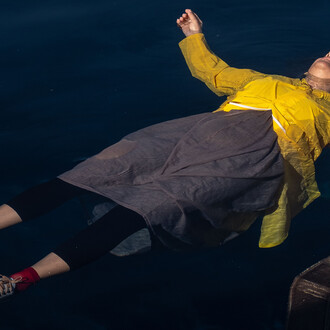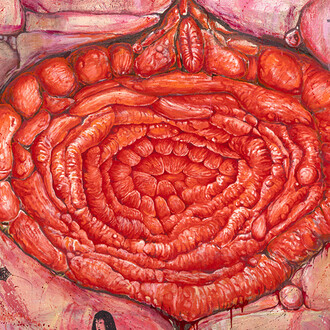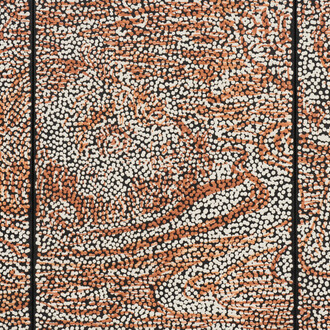Lehmann Maupin presents Reflections and Refractions, an exhibition that unites works by Helen Pashigian and Kim Taek Sang to explore the universalizing possibilities of light, space, and sensory immersion. Though separated by geography, cultural difference, and linguistic barriers, both Pashgian and Kim are deeply invested in the haptic experience of both the art making and art viewing processes. Their work shares an intangible connection: both artists seek to convey the experience of something inarticulable—a natural quality, an elemental space, a fleeting moment in time.
The works on view, which include painting and sculpture, draw viewers into contact with something at once familiar and mysterious, creating opportunity for interaction outside of cultural boundaries or societal norms. Connecting Pashgian and Kim across time and space, Reflections and Refractions gestures towards a kind of cross-cultural utopia: one that is drenched in light and expansive in its environment.
Pashgian is an early pioneer of the light and space movement, which developed in 1960s California as a subset of minimalism and explores atmospheric and ethereal aesthetics, especially in relation to perception. Using an innovative application of industrial epoxies, plastics, and resins, Pashgian’s works are characterized by their semi-translucent surfaces that appear to both filter and contain light. Pashgian understands each of her works as a “presence” in space that does not reveal everything at once; one must move around her sculptures to observe changes, evoking a phenomenon of constant movement. Reflections and refractions features work from her renowned Spheres series (the works on view date 2018–2019)—brightly colored sculptures that contain suspended elements. As light enters each sculpture, distortions, illusions, refractions, and prisms occur as a result of the interplay between the light, reflective surfaces, and the cast forms inside. These sculptures seem to simultaneously come and go, appear and disappear, approach and recede.
Reflections and refractions will also include several of Pashgian’s wall-mounted works (circa 2010), which are made from cast epoxy. Each piece contains what appears as a light leak, or even the reflection of a camera flash, just discernible from the rest of the dark and reflective surface. The works capture Pashgian’s perception of the visual effects of light hitting water, visualizing the elusive moment in time and point in space where light and water meet. According to the artist, one of her earliest memories of growing up in California involves watching light reflect off of tidepools. “That’s what I’m most interested in,” says Pashgian. “The surface, what’s below the surface, and what’s below that.”
Associated with the Korean post-Dansaekhwa movement, Kim’s multicolored paintings are environments unto themselves. Like Pashgian’s works, Kim’s ongoing Breathing light series (1994–today) was inspired by water’s reflective properties and the resulting light qualities. Reflections and Refractions includes a number of these new works, where each canvas appears to hold water and light. Each semi-translucent painting is devoid of forms, descriptions, or narratives, and instead consists of color fields with varying degrees of gradation that fill the planar surface. Kim understands these works as spatial structures composed of natural elements associated with chance—water, light, and time—at once highly intentional and wholly irreplicable.
Kim’s process both emulates and creates this tension between chance and purpose. The artist dissolves acrylic color agents into water, pouring the resulting solution inside a framed canvas and allowing the diluted paint particles to sink into the submerged surface over time. Once the canvas absorbs color, Kim drains the remaining water and allows the canvas to dry. He then repeats this process dozens or even hundreds of times, until the surface appears to “breathe light,” its many layers simultaneously emerging from and receding into one another. Though Kim instigates the process, he allows the elements involved to run their natural course. In Resonance-23-1 (2023), vibrant pinks and translucent blues bleed into one another, creating scattered moments of greater density in shades of purple and red; though flat, the work appears textured and highly tactile. And in Aurora-23-N1 (2023), adjacent hues of blue and green collide in stratified layers that merge evenly into one another. imbuing the canvas surface with the appearance of rippled water. This layered contrast between analogous colors creates an atmospheric depth and sense of movement, as though the painting itself is alive.
Kim cites Pashgian’s work as a major inspiration. “Helen and I are both interested in light,” says Kim, “but we don’t simply paint or sculpt light itself. Helen’s work embodies structures that capture, create, and emit light, and I strive to do the same in my painting. I believe we both realized early on that there is a limit to the expression of light through a simple existing material like paint, so we pushed deeper into processes that capture a deeper essence.”
In Reflections and refractions, the western light & space and eastern post-Dansaekhwa movements coalesce with startling clarity, both materially and conceptually. Pashgian and Kim translate their deep understanding of the characteristics of light-–diffraction, refraction, and scattering—into spatial objects and environments. Together, their work transforms the gallery into a space of interactive, poetic experience, where light traverses boundaries and connects viewers across time, space, and culture.
















